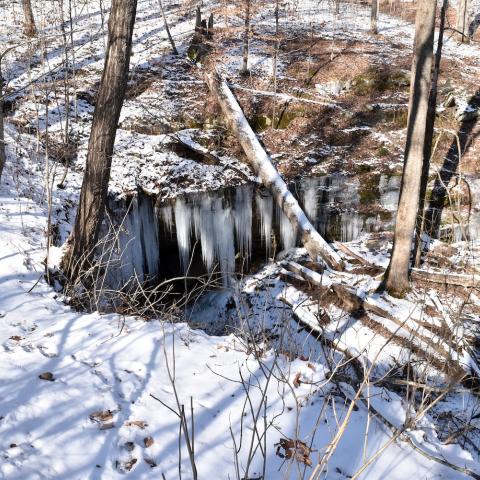
The official length of Mammoth Cave has been extended to 420 miles/NPS file
The world's longest cave, protected as Mammoth Cave National Park in Kentucky, is longer than you might have thought. Recent efforts by the Cave Research Foundation have mapped eight more miles for the cave, bringing its currently accepted length to 420 miles.
It's probably a safe bet that the cave's length will grow as more pushes are made underground to see how long it really is.
The CRF is a non-profit group founded in 1957. Members of the CRF spend hours crawling, climbing, and rappelling through cave passageways, following leads through sometimes very tight openings to document and map Mammoth Cave. Comprised exclusively of volunteers, the group has assisted the park with cave survey work for more than 60 years and has provided thousands of hours of volunteer work.
According to Dr. Rick Toomey, the park's cave resource management specialist, "The Cave Research Foundation is fundamentally the reason that Mammoth Cave is recognized as the world's longest cave. Without CRF exploration and mapping, Mammoth Cave would potentially still be a 44-mile-long cave system."
Mammoth Cave received its official designation as the world's longest cave system in 1969 with 65 miles of surveyed passageways. The connection between the Mammoth Cave system and the Flint Ridge system was discovered on September 9, 1972, by CRF cavers who traveled underground for more than 14 hours. This connection would bring the total mileage of the Mammoth Cave system to 144 miles.
In the 49 years since that connection was made, continued assistance from the CRF has led to discovered connections between several smaller caves like Proctor Cave, Roppel Cave, and Morrison Cave and the larger Mammoth Cave system, all contributing to the current total surveyed length of 420 miles.
"Every mile of cave length means that a Cave Research Foundation or Central Kentucky Karst Coalition caver physically visited and surveyed that part of the cave," explained CRF Eastern Operations Manager Karen Willmes. "Many of the cave trips are long and arduous, involving climbing, vertical exposure, squeezes, crawlways, water, and mud. After the trip, cartographers turn the data collected on the cave trip into a map. Other volunteers provide surface support. It's a first-rate effort for a world-class cave, and we're proud to be a part of it."
"Volunteers, like the members of the Cave Research Foundation, provide an invaluable service to parks across the nation," said Mammoth Cave National Park Superintendent, Barclay Trimble. "Their assistance through valued partnerships provides parks like ours access to services, expertise, and resources that might not otherwise be available. With the help of the CRF, we are better able to understand the dynamic environments inside the cave and provide our visitors with an improved experience to their national park."
Volunteer organizations, like the Cave Research Foundation, provided Mammoth Cave with hundreds of hours of volunteer assistance in 2020. A variety of opportunities to volunteer for the National Park Service exist. While some volunteer positions require certain skills or abilities, others require no specialized training.


 Support Essential Coverage of Essential Places
Support Essential Coverage of Essential Places







Add comment